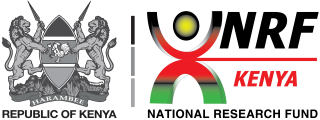Intergrated Water Resources Management
Permanent URI for this collection
Browse
Browsing Intergrated Water Resources Management by Funder "Egerton University"
Now showing 1 - 2 of 2
Results Per Page
Sort Options
Publication Some aspects of Oreochromis niloticus baringoensis (Trewavas, 1983) fishery assessment and influence of selected water quality parameters in the hot springs of Lorwai Swamp, Baringo, Kenya(Egerton University, 2019-12-05) Adamba, Stephanie Wangare KamauWater quality has been documented to affect the biology and well-being of fish. This study therefore investigated some aspects of Oreochromis niloticus baringoensis (Trewavas, 1983) fishery assessment and the influence of selected water quality parameters in two hot springs draining into Lorwai Swamp; Lake Bogoria Spa spring and Chelaba spring between the months of July and August, 2018. A total of 445 fish were collected; 244 from Lake Bogoria Spa spring and 201 from Chelaba spring using a seine net. Length Weight Relationship (LWR) was determined using Le Cren’s equation; W=aTLb and Fulton’s condition factor (k) determined using Ricker’s equation; 100W/L3. LWR results indicated an isometric growth for fish from both springs. The mean (± SD) k values for fish in Lake Bogoria Spa spring were 2.02±0.25 for the males, 2.02±0.27 for the females and 2.00±0.26 for both sexes. In Chelaba spring, the mean k values were 2.03±0.21 for the males, 1.97±0.25 for the females and 2.00±0.23 for both sexes. These values indicated that the fish in these hot springs are in a very good condition and healthy status with k values above 1. Some of the selected water quality parameters indicated a positive correlation with the length, weight and Fulton’s condition factor of O. n. baringoensis in the two hot springs.Publication Variation of Human and Domestic Animal’s Activities with Discharge in a High Altitude Tropical Stream, the Njoro River, Kenya(Egerton J. Sci. & Technol., 2019) C. M., M’Erimba; Chepkorir, J. K.From ancient times human settlements and cultures thrived along rivervalleys which provided water for domestic use as well as agriculture.aspopulation grew, human activities impacted river valleys as well as affectedwater quality. An investigation was carried out during low (January to March2012) and high (August to October 2012) discharge regimes in the NjoroRiver to establish whether the river’s discharge dictated the visit rate andactivities by people and animals at three sites. The study involved countingof people and animals during the day between 1000–1300hrs that visited theriver, and recording down the activities. The visit rate by people wasstatistically insignificant between low (30.75 ± 5.64 ind. hr-1) and high(20.58 ± 3.41 ind. hr-1) discharges respectively, (t =1.544, d.f = 70, p >0.05). A similar observation was made in mean visit rates by animals(t-value = 0.725, p > 0.05). However, significant differences in the rate ofpeople and animals (pooled data) were evident among the sites during lowand high discharge periods (one-way ANOVA, P < 0.001). More menfetched water at the most downstream site than women during both dischargeregimes, and the opposite was evident at the first site. It is concluded thatdischarge did not influence significantly the visit rates and other factors thatare site specific should be explored.Disturbances in the Njoro River are ofpress type and requires interventionfor themanagementof this river.

